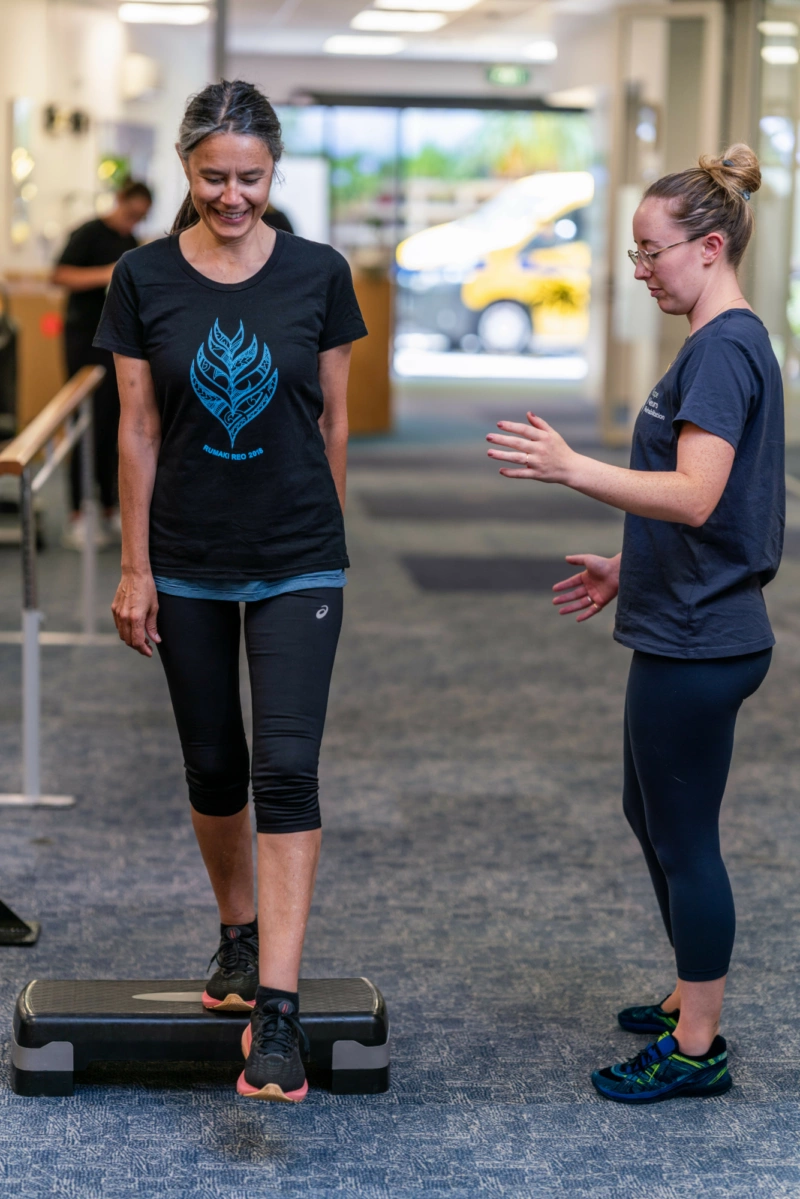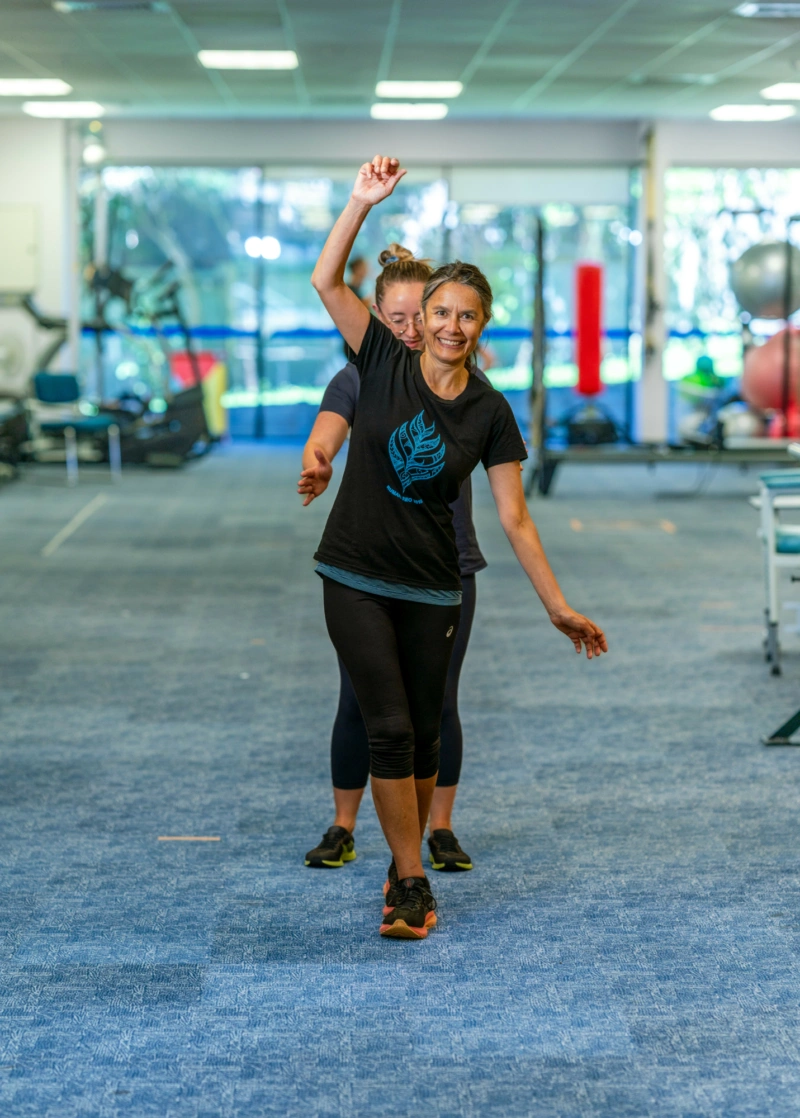Benefits of exercise
- Increases strength & endurance
- Improves ability to do daily tasks and maintain independence
- Reduces fatigue and boosts energy levels
- Lowers risk of falls
- Helps control weight
- Reduces risk of other health conditions
- Improves mood
- Helps prevent pain and postural changes
- Helps prevent stiffness and muscle shortening
Exercise guidelines for ataxia
- Aim for 30 minutes of moderate exercise most days, around 150 minutes a week in total
- 2–3 strength sessions – upper body/lower body/core
- 2 balance sessions
- Specific exercises as needed – coordination and visual stability exercises
Importance of standing
Maintaining regular standing is important and provides benefits such as:
- Improved bladder and bowel function
- Increased bone density
- Better muscle length and integrity
- Improved blood pressure control
If you are no longer walking but can stand safely, try to include standing in your routine.
Warning signs – Stop & Seek Help!
- Pain or swelling in joints or muscles
- Soreness lasting more than 48 hours
- Increased fatigue or exhaustion
- New or increased tingling/pins and needles
- Dizziness or feeling lightheaded
If you notice any of these, stop exercising and consult your GP or physiotherapist.


Creating your exercise routine
Pre/Post Exercising
Warm-up (5–10 min):
- Increases blood flow to muscles and reduces injury risk
- Use large muscle groups, e.g., bike/treadmill before leg exercises
Cool-down (5–10 min):
- Helps recovery and includes stretches
- End with low-intensity movement
Exercise tips
Aerobic: any activity that increases your heart rate
- Choose activities you enjoy, like walking, swimming, or cycling
- Keep the intensity moderate - about a 5 or 6 / 10 effort, with a steady rhythm
- You should feel slightly out of breath but still able to talk
- Aim for 30 minutes a day, five days a week ideally.
- Doing the 30 mins in 3 x 10-minute blocks are fine too
- Don’t push yourself to exhaustion – finish feeling like you could do a bit more
- Some muscle soreness is okay, but it shouldn’t last more than 48 hours
- Pace yourself and build up gradually to avoid fatigue
Strength:
- Important to discuss proper strength training with a health professional
- Start with low weight, higher reps to build endurance
- Progress to higher weights, lower reps to build strength
Balance:
- Make sure you're in a safe spot, like near a wall or grab rail
- Have a sturdy chair or surface behind you, just in case you need to sit down quickly
It is possible to adapt all exercise categories to your needs, abilities and preferences. Speak to your physiotherapist about creating an exercise regime that works for you and your lifestyle today
See the difference we cann make – together.





